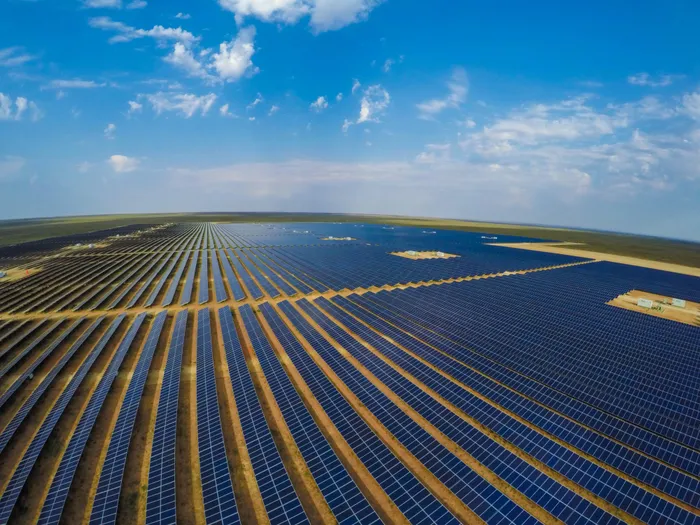South Africa’s renewable energy drive remains strong as businesses seek resilient energy strategies

In the utility-scale renewable energy sector, where projects range from R250 million to R10 billion, natural perils remain a primary concern, says the author.
Image: Supplied
South African businesses are increasingly seeking independence from Eskom due to its reliability issues, and the steady, multi-digit annual tariff increases the utility is imposing. While cost savings are a primary concern, power stability is equally critical, as remaining dependent on Eskom's ageing coal fleet and underperforming mega power stations like Medupi and Kusile is no longer viable.
These factors, combined with the global shift to significantly reducing emissions and trying to achieve Net Zero targets, and the ability to provide energy that is clean, available, and affordable, leading the clean and just energy transition has made renewable energy, particularly solar and wind with battery storage the logical path forward.
South Africa has made significant strides in integrating renewables through the Renewable Energy Independent Power Producer Procurement Programme, designed to bring renewable energy onto the grid at the lowest possible cost for consumers.
However, progress has been delayed due to several well-documented challenges, including policy stagnation and leadership decisions. Consequently, the country experienced severe electricity shortages, culminating in stage six load shedding.
Despite these setbacks, the drive towards energy independence through renewables remains strong. Businesses must prioritise resilient energy strategies, leveraging solar and wind solutions to secure long-term sustainability and operational stability. This is clearly demonstrated by recent Commercial and Industrial (C&I) projects reaching Financial Close, some of the largest projects in Southern Africa to date.
As iTOO Renew Risk we recently provided the Insurance solution to Red Rocket’s largest wind farm Overberg, 380MW. Once fully operational, Overberg Wind Farm will be South Africa’s largest privately developed single wind farm, significantly contributing to the country’s energy security. The project is expected to cut Richards Bay Minerals (RBM’s) annual greenhouse gas (GHG) emissions by approximately 30%, equivalent to 0.7 million tonnes of CO₂e.
In the utility-scale renewable energy sector, where projects range from R250 million to R10 billion, natural perils remain a primary concern. While insurance typically covers human error, the real challenge lies in mitigating catastrophic natural events such as windstorms, floods, hail and lightning.
These events, though infrequent, tend to result in high-severity claims. A recent example is a windstorm in the Northern Cape, where gusts of 156km/h caused extensive damage to a solar facility, potentially leading hundreds of millions in claims. This underscores why insurance is critical, ensuring financial protection against unpredictable losses.
Globally renewable energy projects face increasing risks. In North America, particularly Texas, hail damage has become a significant issue for solar assets. Historically considered a minor risk, it has now escalated to the point where insurance for hail-related losses is either heavily sub-limited or unavailable.
This impacts lenders and financial institutions, which require full coverage to safeguard their investments. However, insurers typically cover unforeseen losses rather than predictable, high-frequency risks, creating a dilemma where known perils, such as hail damaging glass panels, fall outside standard coverage.
The underwriting process is essential for balancing risk and coverage. Insurers assess multiple factors, including natural catastrophe reports, historical weather data, flood mapping and consultation with reinsurance partners. If a site is deemed low-risk, full coverage is granted.
However, in high-risk locations, terms are adjusted accordingly. For example, building solar infrastructure in a dry riverbed that experiences periodic flooding requires mitigation strategies such as elevating critical components above historic flood levels.
In South Africa, another challenge is grid capacity. The Western, Eastern and Northern Cape’s available grid space has already been allocated, forcing new projects into areas with less favourable renewable resources.
But these shifts introduce different risks, such as increased hail exposure in the Free State for solar facilities and heightened lightning risk for wind farms. Despite these challenges, strategic risk assessment and mitigation remain essential in ensuring long-term stability for renewable energy investments.
Generally, South Africa’s renewable energy projects are indeed performing well, particularly given the country’s abundant solar and wind resources. Solar PV and onshore wind farms are consistently meeting their availability targets, ensuring stable electricity generation as long as the grid remains accessible.
The business risks, such as cloudy days or periods of low wind, are inherent to these technologies, but they are factored into financial modelling and loan repayment structures. Historically, the biggest operational challenge has been grid availability and load shedding.
Even with strong renewable generation, if transmission constraints prevent power from being evacuated efficiently, project performance suffers. Fortunately, with recent improvements in grid and asset management, load shedding appears to be less of an immediate threat, for now. However, the ongoing risk of failures in the coal fleet, especially during winter, remains a wildcard.
South Africa’s renewable energy industry stands at a pivotal moment, balancing groundbreaking achievements with evolving challenges in risk management, infrastructure and finance. With innovative solutions, like wheeling and aggregators, strategic risk underwriting and collaboration among developers, insurers and financiers is key as the sector is poised for continued growth and resilience.

Jared Nivison, Managing Director at iTOO Renew Risk.
Image: Supplied
Jared Nivison, Managing Director at iTOO Renew Risk
*** The views expressed here do not necessarily represent those of Independent Media or IOL.
BUSINESS REPORT